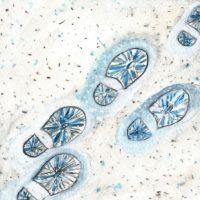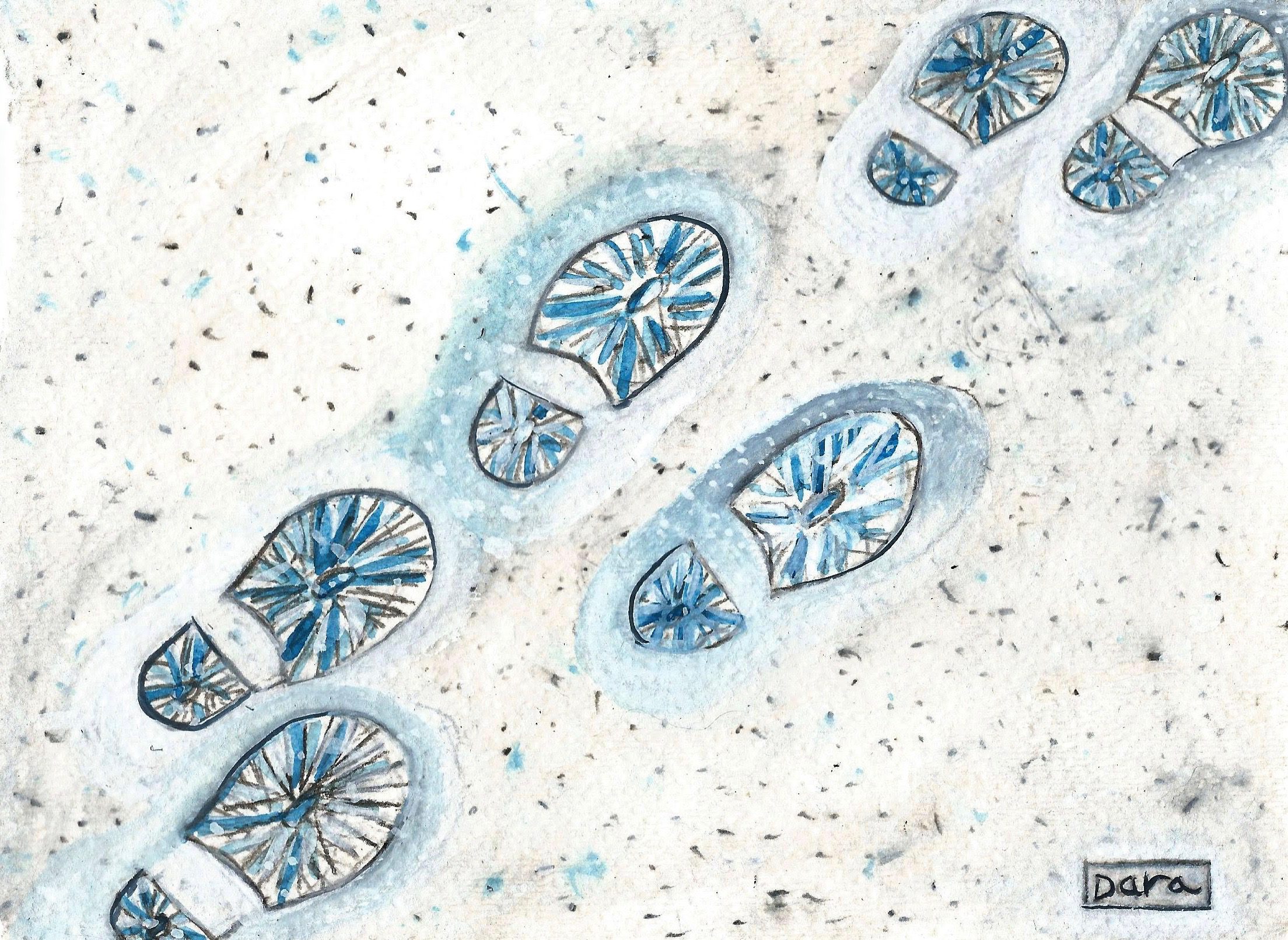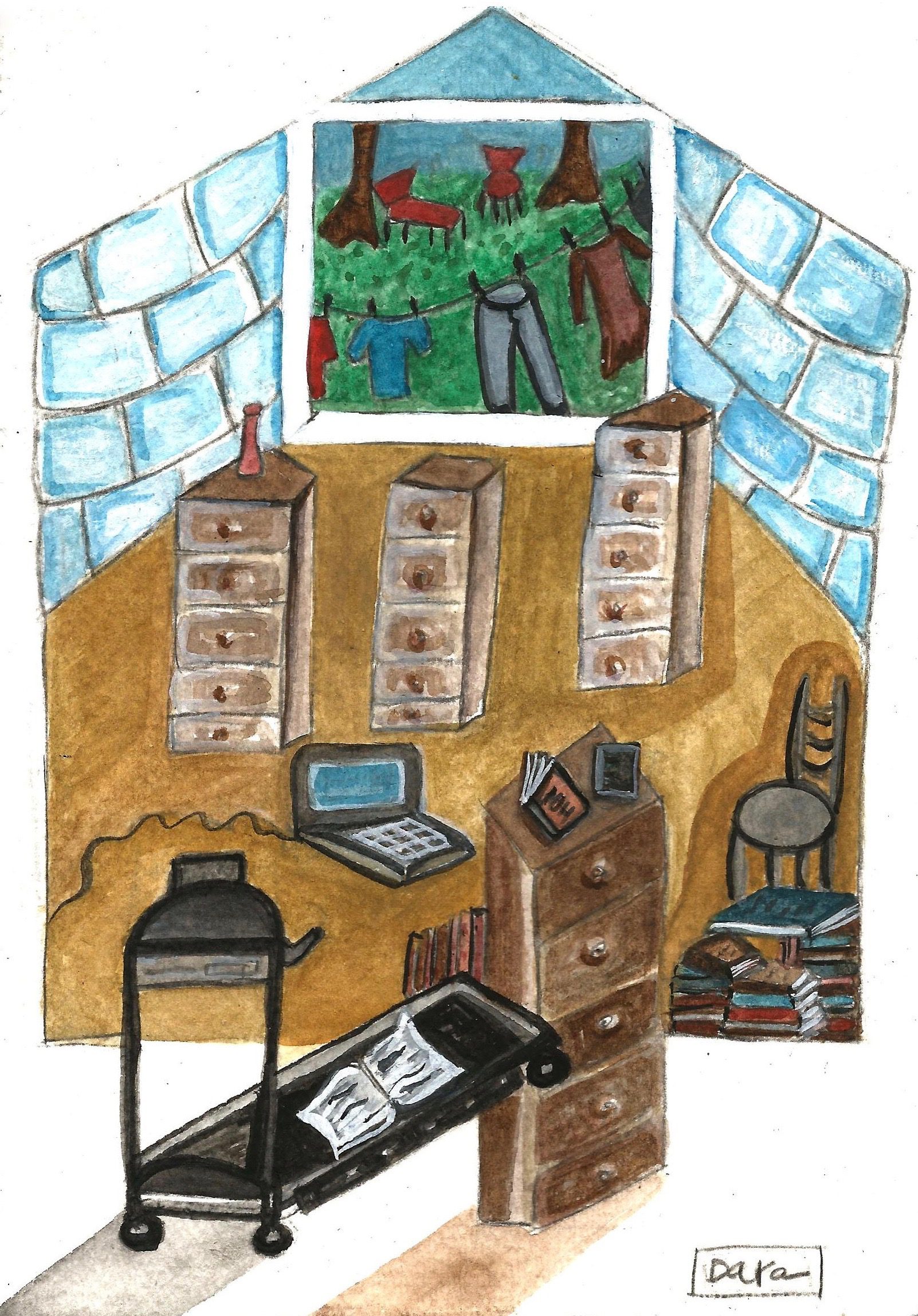“Research Notes I-VII” are excerpted from Brother in Ice by Alicia Kopf with permission from the publisher And Other Stories. English-translation copyright 2018 Mara Faye Lethem. The US edition will be released on June 5, 2018.
Brother in Ice is a hybrid novel―part research notes, part fictionalized diary, and part travelogue―which uses the stories of polar exploration to make sense of the protagonist’s own concerns as she comes of age as an artist, a daughter, and a sister to an autistic brother. Conceptually and emotionally compelling, it advances fearlessly into the frozen emotional lacunae of difficult family relationships. Deserved winner of multiple awards upon its Catalan and Spanish publication, Brother in Ice is a richly rewarding journey into the unknown.
***
Research Notes I
PENGUINS
The penguins of the Antarctic were a new discovery for the explorers, who began filming them in the early twentieth century. Everyone was soon taken with the sweet creatures; people wanted to see images of the playful penguins. But if you’ve seen Encounters at the End of the World, by Werner Herzog, you’ll know that sometimes a penguin will voluntarily separate from the group and head in the opposite direction, away from the sea, toward its death.
SOUTH POLE
There’s a store downstairs on the street level that sells frozen foods. The cashier is tall, blond, stocky. He reminds me of Amundsen, the explorer.
PEAKS AND POLES
The Sherpas and the Inuit have similarities. The former reach the summit every day, the latter helped everyone discover the North Pole.
NEWS
The mountaineer Ferran Latorre gave up on his ascent of Everest in order to rescue a sick Sherpa.
THE WHITE RABBIT
When I was little, my mother worked in a small-town school. Its playground was the woods. Once I saw a bunny nestled among the roots of a tree. But it wasn’t one of the typical rabbits that camouflage themselves amid the brown tones of the Mediterranean landscape; it was a white rabbit. When I got closer I saw that it was quite big; stock-still, it stared at me with its red eyes. It let me pick it up and I realized it was panting. I decided to take it to the vet, but on the way there, in the car, it died.
WHITE DEATH
Death by freezing is called sweet death, or white death. It is somehow linked to sleep, because of their apparent likeness, as opposed to the violence of a death by fire. Those who’ve seen it up close say that there’s nothing sweet about an icy grave; freezing is as terrible a death as burning.
Yet ice retains the body’s shape the way images do; it is like photographs. Photography is to its subject as ice is to the interred explorer: a thanatological process that presents us, abruptly, with a body from the past.
Research Notes II
EPIC I
Is it possible for an epic to not be imperialist, athletic, or totalitarian?
EPIC II
Isn’t there a territorial struggle in every family story? Domestic and emotional spaces as territories to be conquered.
AHAB
Sometimes I feel like Captain Ahab, pursuing my white whale. With me is E, who, like Ishmael, is spectator to an obsession he does not always understand.
Research Notes III
THURSDAY, AUGUST 16, 2012
I’ve found the southernmost Spanish scientist. During the winter months in the Antarctic he and a few colleagues will be alone there maintaining the Amundsen-Scott South Pole Station.
Reading his blog, I find this:
Today, to welcome in the civil twilight and bid farewell to the nautical twilight, I went for a walk. In each of the four directions (N, S, E, W), there are a series of panels that serve to check visibility in the summer for arriving flights. To the east, the first one is half a mile away. From there you can see the next one, a mile away from the base. When you get there you can see the next one, a mile and a half out. My heart started to beat faster because the base already seemed distant. I was tempted to go on. When I got to the third one, I could see the fourth and last one another half-mile ahead, so I continued. It was spectacular, and a bit unsettling, when I turned around and could no longer see the base, which was two miles away. There was no sign of any geographical feature or texture; it was all uniform, white. Beautiful. Soon, since I knew where to look, I figured out more or less where I was. In any case, I could follow my footprints back. Out there I couldn’t hear a thing, except for the whistling in my ears. There was barely any wind. Total solitude.2
Research Notes IV
AUGUST 26, 2012
Neil Armstrong, the first man to set foot on the Moon, has died. His obituary says that it is our mission to conquer Mars for the coming generations.
AUGUST 27, 2012
It’s hot but I’m talking about snow.
AUGUST 30, 2012
News item:
Today Scott’s ship, the Terra Nova, was found in Greenland.
Some scientists who were carrying out underwater tests with sonar detected an object fifty-seven meters long. One of them, a fan of the history of that expedition, suspected that it could be the famed boat that left England to conquer the South Pole. The article has an embedded video. In it, you can blurrily watch a probe exploring a very dark marine floor. At first all you see are well-lit plankton particles, eventually very decomposed pieces of wood appear. Disturbing the Terra Nova in its white tomb seems like sacrilege to me.
SEPTEMBER 15, 2012
Lately something unprecedented has been happening: my brother, who is generally passive and calm, gets enraged when he can’t unbutton his pants, or shave himself. Then he picks up whatever’s nearby, throws it, and cries. Only my mother has seen it happen; she told me about it recently, with concern.
My brother will outlive my parents, who fear for his future. Making sense of all this, when you don’t believe in God, is difficult. I imagine my brother in other time periods, in other families. Would the Inuit have abandoned him on the ice? Would he have lived to middle age? Would he have been put in an institution, fifty years ago? What responsibility do I have in all this?
NOVEMBER 12, 2012
News item:
Two people die, an eighty-two-year-old mother and her forty-year-old daughter. The mother’s death from natural causes is followed by her disabled daughter’s death: of starvation. Did they live alone, isolated, at the North Pole? No, they lived in my country.
Research Notes V
HEROES
The question in Fitzcarraldo, Herzog’s film in which the protagonist ascends a mountain in a steamship to descend on the other side, is whether we are dealing with a hero or an antihero. This question runs through most of my readings on conquests and explorations, when looking at the personal biographies of Amundsen, Boyd, Cook, Peary, Shackleton, Scott.
IN CLASS
Today in class, with my students, we were writing a story about a man in love with a hippopotamus. One of them declared: “It should be a walrus, they’re harder to kiss.”
CONQUERORS
At my high school there was a sign that said: “The world belongs to those who read.” That’s a lie, I thought, a lie, a lie, a lie.
HUNTER
I seek. I don’t know when I will return. I’ll bring back the goods, but I don’t know when.6
Research Notes VI
OCEANOGRAPHY
Yesterday, as I quoted the names of foreign explorers to C, a woman I work with, she told me about Pepita Castellví, the prestigious Catalan oceanographer. I found a speech she gave in 2007, declared International Polar Year, for the inauguration of La Mercè, Barcelona’s annual festival:
[. . .] It is paradoxical that at a time when a large part of humanity has reached a level of scientific and technological development that allows it to tackle challenges beyond Earth, there are parts of this planet that are completely ignored by science. The oceans are the most scandalous example. [. . .] The oceans occupy 75% of the Earth’s sur- face and the underwater reliefs are deeper than those on the surface of the continents. Everest is more than 8,800 meters high, but the deepest sea trench known today is more than 11,000 meters deep. Given these characteristics, it would lead us to think that the most important part of the planet is not the visible land but the large volume of water that surrounds it. [. . .]At this level the polar regions come into play; their large masses of ice serve as thermal buffers against the warming waters at lower latitudes. The study of the Antarctic is a new field of study for science. It more or less began in 1957 with the celebration of the Second International Geophysical Year. Spain was left out of that movement, since it was unable and unwilling to take on such a large-scale project at a time when even research on a more accessible scale didn’t have the minimum means it needed. [. . .] I like to say that all the events that take place in nature are recorded in the elements, which we have within our reach, like a great big book. The problem is that we don’t know how to read what we are being shown. Actually, scientific investigation is nothing more than learning that language in order to be able to interpret what nature is telling us.
[. . .]I wanted to end with a quote from Ernest Shackleton, the great explorer who led one of the greatest adventures ever in Antarctica: “The Polar Regions leave a profound mark on those who have struggled in them, which is difficult to express to men who have never left the civilized world.”
Research Notes VII
A CALL FROM THE ARCTIC
My father set up a treadmill a neighbor gave him in my bedroom at my mom’s house, so my brother would get some exercise. The room is small and filled with dressers. It has a window that opens onto the inner courtyard, where we hang up our clothes to dry. I rarely sleep there, but it is important for me to know that there’s some stable place where I can leave my books and whatever’s left over from a move, and come back for them at some other time. An anchoring point. Having that small room completely filled with a machine more suited to a villa than an apartment bugs me. And my brother never uses it anyway. I think about calling someone instead of staying at home writing. My father is celebrating Christmas with his other family, visiting Santa Claus in Lapland. Evenings, when you have no plans to see anyone later, can be menacing. I let my boyfriend go away for the weekend with some friends. It’s not the first time. The little time I have to write is precious to me.
“You stay and do your artist stuff,” he said through clenched teeth before leaving.
Doubt and loneliness are persistent. I don’t know if writing all this is worth the effort, or whether I have any right.
“Worse / Even than your maddening / Song, your silence,” Sylvia Plath reminds me.
I think about calling someone, but all my friends are away for the holidays. My mother, twenty years a single, met someone a few months ago on a dating site, and she seems happy. Her calls come less frequently. I tell myself that an hour of exercise will wipe it all away. For some of us, Christmas is a regression to our teenage years.
Soon I’ll be back to my work routine. Then I won’t think about all that. But I’ll return to it occasionally: on holidays, on some weekend alone. Just when I’m about to shut down my computer, I get a rare call from my father. He tells me what his Christmas at the Arctic Circle is like. Sometimes I think we maintain a certain telepathy—which we had when I was a girl. Did he hear that I was thinking of him? He tells me about visiting Santa Claus with his wife’s nieces and nephews, the igloo hotels, and the tours in sleighs drawn by reindeer. It’s all really touristy, he says. I don’t get the chance to ask him about the aurora borealis because we get cut off. I don’t have a lot of coverage in the studio. I call it the igloo.
M
I’d have to go back one more generation to properly contextualize my parents (we really should go back a couple of generations to understand any of us), including why I have no grandmothers and only one grandfather when the other is still alive. Then there’s this thing with my brother, which no one knows the cause of. I don’t know if I can explain that story now. I don’t even know it myself.
I have the feeling that my life began when M was born, seven years before me. My appearance was unplanned. When my mother found out she was pregnant, she cried. Later—she told me twenty years afterward—she thought that M would need a sister.
There was risk of a miscarriage at first. It seems that with that warning, the doctor ordered my parents to be very careful and my mother, naturally active and energetic, was confined to bed. The pregnancy went on almost ten months, since in the end I didn’t want to come out—both my premature leaving home and my reluctance to leave the womb are typical of me, and probably understandable.
A few days before they were going to induce labor, on January 5, 1982, the eve of Epiphany, the streets invaded by royal carriage floats with the three kings’ pages tossing candy to the children, I showed up.
My mother says that I was born with my eyes open, and that I was looking at her.
DECEMBER 27, 2013
Luminous night-time clouds in the Antarctic
Data received from NASA’s AIM satellite shows that the luminous blue clouds that appear each austral summer over Antarctica are like large “geophysical lightbulbs.” They return each year as spring ends, and they are at their full intensity for no longer than five to ten days. As the month of December continues, a large bank of luminous clouds stops over Antarctica. It began this year on November 20 as a small electric blue cloud and quickly expanded to cover almost the entire continent. AIM is monitoring the clouds’ progress as they swirl and wave around the South Pole. “The clouds appeared over the South Pole earlier than usual this year,” says Cora Randall from Colorado’s Laboratory for Atmospheric and Space Physics, a member of the AIM’s scientific team. “Since AIM has been in orbit, the only earlier start was in the 2009 season,” she said. The luminous clouds are the highest ones on the planet. Sown with disintegrating meteoroids, they form on the edge of space 83 kilometers above the Earth’s surface. When light hits the tiny ice crystals that make up these clouds, they seem to glow with an intense, electric-blue tone. These blue clouds are most widespread and brightest during the austral summer. They light up over the South Pole from November to February, and move to the North Pole for May to August.6
***
Rumpus original art by Dara Herman Zierlein.
***
2. Carlos Pobes. Facebook status update from September 6, 2012. The author’s website: http://www.eldiamaslargodemivida.com/es. ↩
6. “Hunter” by Björk plays in the background.↩
7. http://www.lavanguardia.com/vida/20131227/54397579936/aparecen-nubes- azules-sobre-antartida.html.↩







